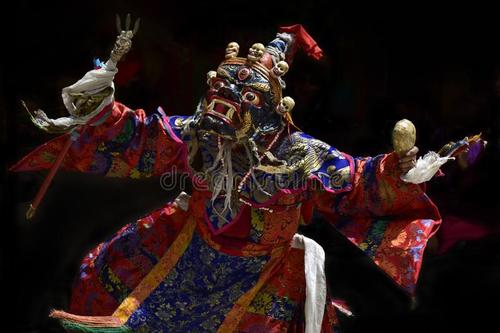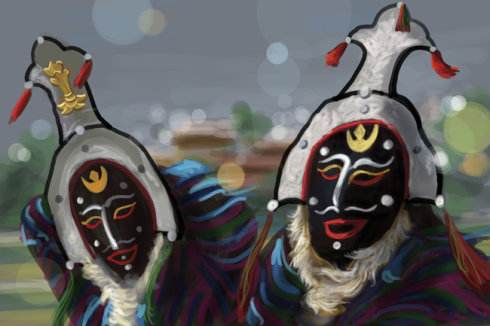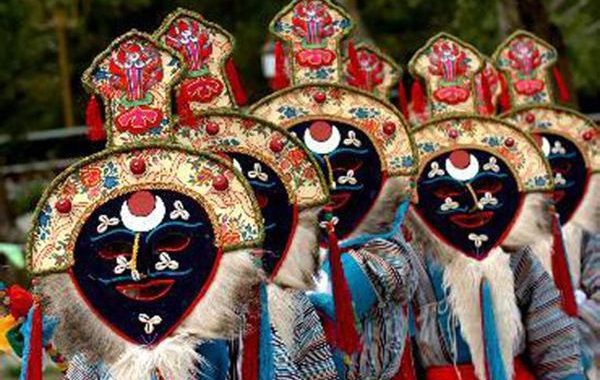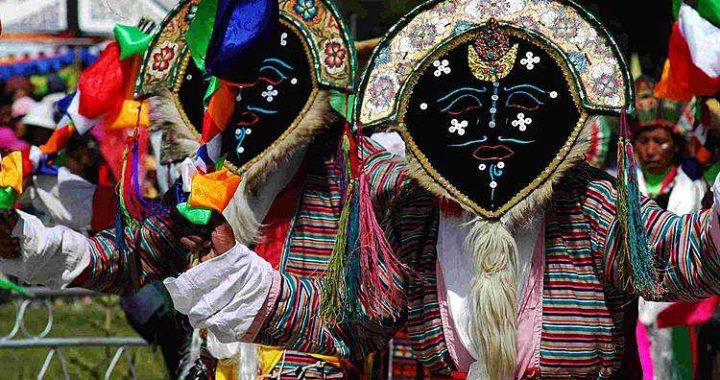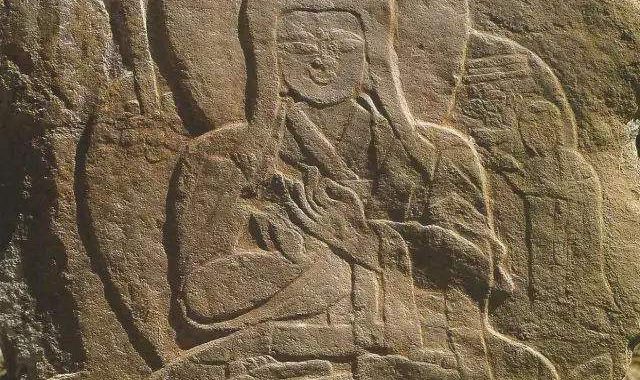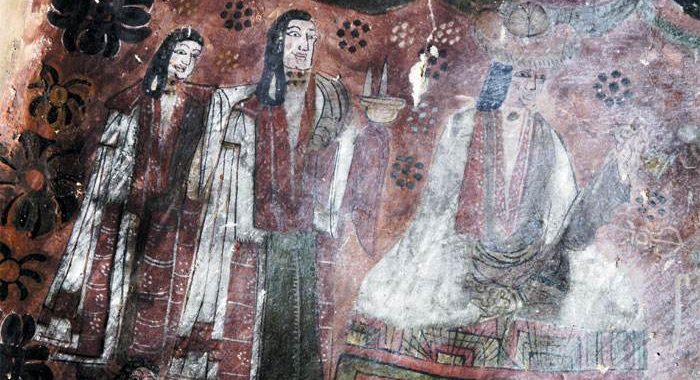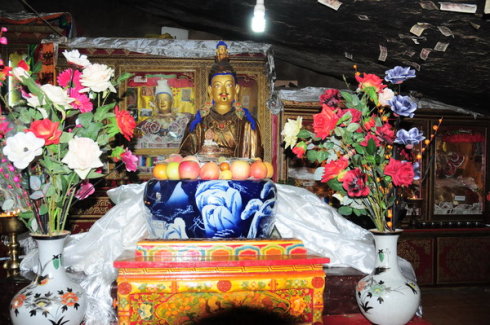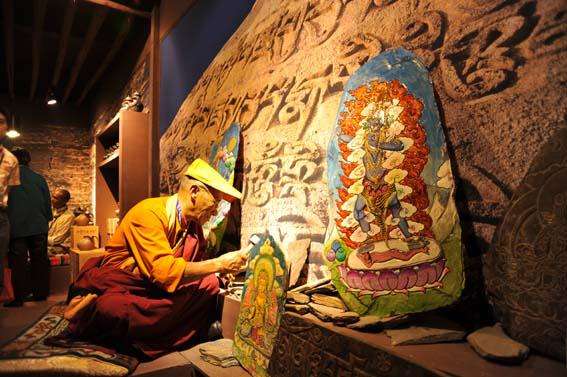The development of modern professional singing and dancing
5 min readIn the 1950s and 1960s, Tibetan people got rid of the long bondage of the feudal serf system and became their own masters under the leadership of the Communist Party of China following the historic steps of the peaceful liberation of Tibet and the democratic reform. Their joy and pride burst like the waters breaching a dyke, and they expressed their infinite yearning for a better future with singing.
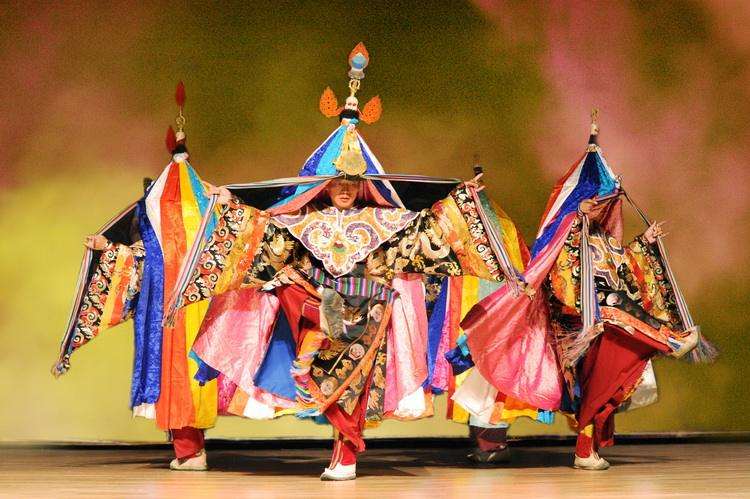
In March,1954,a troupe was established from the original DalaiTroupe to perform nationwide. The troupe composed and rehearsed songs and dances themed on the peaceful liberation of Tibet with characteristics of Tibetan folk singing and dancing, for example, Yamdrok Gamulin, Blue Sky, Tibet-Our Home, and Geba Sangbu. In August, the troupe departed from Lhasa with a Tibetan delegation and headed east to Chengdu after passing through Chamdo and Garze. On the way, they conveyed their greetings to the road construction corps. Their later destinations for performances were Chongqing, Wuhan, Nanjing, Shanghai, Hangzhou, Shenyang and Tianjin. Before the National Day, the troupe arrived in Beijing and performed. They were highly praised.
From April 25 to May 1,1956, the Preparatory Committee of Tibet Autonomous Region was established. The central government delegation headed by Chen Yi, vice premier of China, visited Tibet to congratulate them. The art team from the central government delegation brought along outstanding art programs of different ethnic groups and met withthe art troupe of the Working Committee of Tibet, the art troupe of the Tibetan Military Zone Command, troupes of various areas of Tibet and Tibetan opera teams in Lhasa to stage excellent performances. The programs showcased harmonious scenes of all ethnic groups happily living in China. The Tibetan art troupe, with nearly a hundred members, traveled to Beijing through the Qinghai-Tibet Highway in 1956 and attended the ethnic group folk music and dance joint performance held in the capital in the spring of 1957. The troupe was well received by residents of the capital city.
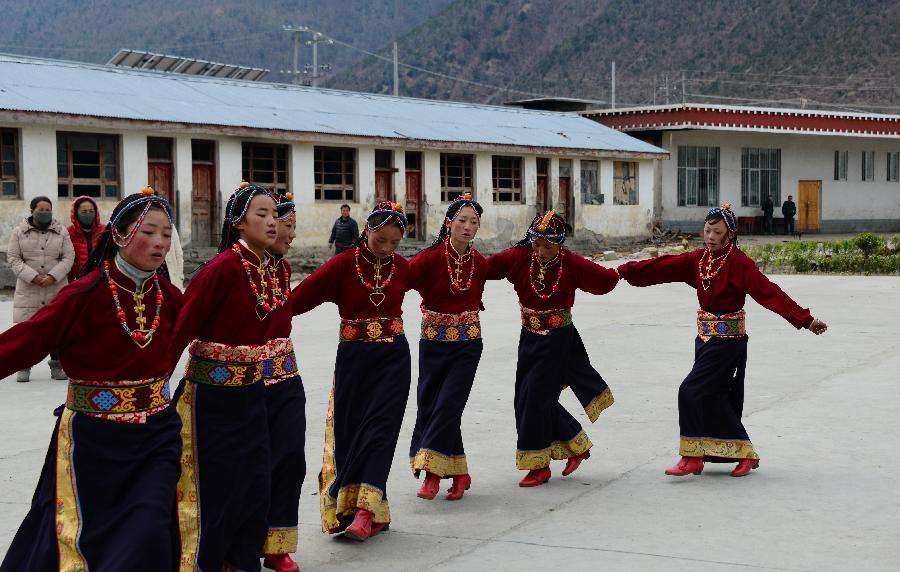
Between 1951 and 1959, the singers and dancers with the corps that built the road to Tibet worked on the front line to learn about heroic deeds and experience the affinity between civilians and officers, eventually composing modern singing and dancing works with distinct ethnic characteristics.
The democratic reforms implemented in 1959 unveiled a new chapter in the history of Tibet. In September, the Publicity Department of the CPC Lhasa Municipal Committee organized amateur teams of nearly 60 units for joint performances. The mass cultural activities in the ancient city of Lhasa emerged like bamboo shoots after spring rain. From September to early October, the troupe of the Tibet Autonomous Region-which was just established-composed programs such as the Night of Harvest to reflect the liberation of a million serfs and as part of the national art performances in Beijing to mark the 10th anniversary of the founding of China.
In 1963, the Tibet Autonomous Region held its first mass art performance.A delegation was sent to Beijing to attend the ethnic amateur art performance and showcased a batch of outstanding programs with fresh content and distinct ethnic flavor. The works included Celebrating a Good Harvest, Laundry Song, Visiting the New City and the Night of Harvest.
In 1965, the Publicity Department of the CPC Committee of Tibet Autonomous Region sent a group of artists focusing on Tibetan literature, music, dance and performance to help newly-fostered Tibetan musiciansand dancers compose a large-scale music and dance epic,i.e. Liberated Serf, to be presented during the official celebrations of the founding of Tibet Autonomous Region in September. On the auspicious day, art troupes in Tibet, the China Ethnic Song and Dance Ensemble, the ChinaNational Opera House and other art troupes performed. The subsequent celebration saw the second professional art performance held in Lhasa.
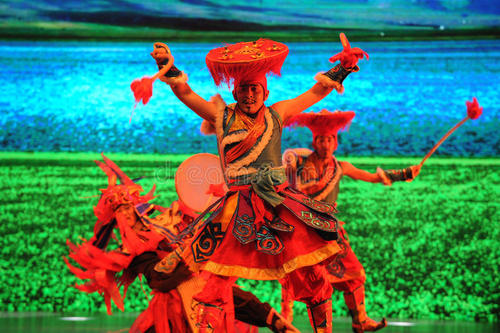
The programs were fresh and robust, with strong ethnic features and current flavor, vividly reflecting the joy of liberation and the brand new spiritual outlook of Tibetan people.
In March,1980, the central government held the First Work Conference in Tibet. Since then, Tibet entered a new period of socialist construction. In early winter, the Song and Dance Troupe of Tibet Autonomous Region arrived at Beijing to attend the ethnic art performance and presented a batch of outstanding music and dance programs, of which Linka Dance and Spring of Sherpa won awards.
From May 11 to 16,1981, China Ethnic Song and Dance Ensemble, Yunnan Song and Dance Troupe, Chengdu Military Command Banner Modern Drama Troupe and other troupes came to Lhasa to celebrate the 30 th anniversary of the peaceful liberation of Tibet. Later that month, art troupes from Tibet and other areas presented excellent performances in Lhasa.
In early October 1982, resuscitated by Lhasa Mass Art Center and theLiterature and Sports institute of the Normal College of Tibet,”Gar singing and dancing”was performed for the first time in public at Dongfanghong Theatre in Lhasa.
In early 1984, the Song and Dance Troupe from Tibet Autonomous Region composed a large musical drama, Passion in Reba, the accompanying music by Palden Namgyal and Kelsang Dajie, Tibet’s first generation composers. On April 29, the play was staged in Beijing and well received by the audience. On November 8, the culture and education working group of the CPPCC Committee of the Tibet Autonomous Region organized the “Nang-ma Concert”and “Nang-ma Music Symposium”in Lhasa.
To mark the 20th anniversary of the founding of the Tibet Autonomous Region, grand celebration programs were held in various areas of Tibet in 1985.
In October,1986, the Culture Ministry organized the Tibet Art Ensemble together with the Song and Dance Troupe of Tibet Autonomous Region had a special performance before the diplomatic corps in China and foreign experts in Beijing. It received high accolades.
In June 1992, the Introduction to Singing and Dancing(Tibetan) by Sholkhang Sonam Dajie, associate professor in the Art Department at Tibet University, was officially published. On December 1, the first Yarlung Culture and Art Festival of Shannan Prefecture was held in Tsethang, and eight counties in Shannan Prefecture represented by folk art troupes staged a joint performance at Tsethang Town.
In August and September of 1994, the Song and Dance Troupe of Tibet Autonomous Region created and staged Ode to the Wild Geese to celebrate the 30th anniversary of the founding of Tibet Autonomous Region, which was well appreciated by the audience.
In early July,1997, the troupe created and staged Ode to Reunion to embrace the return of Hong Kong to the motherland.
On June 25,1999, the major themed musical drama Qomolongma was performed at Beijing Workers’ Gymnasium and received high praise from the audience. In August, Ode to Auspiciousness was performed at the opening ceremony at Lhasa, venue of the 6th National Traditional Sports Festival of Ethnic Groups, enjoying great success.other major themed songs and dances created from 2000 to 2012 include Tibet-the Third Pole.
